Leh – Ladakh
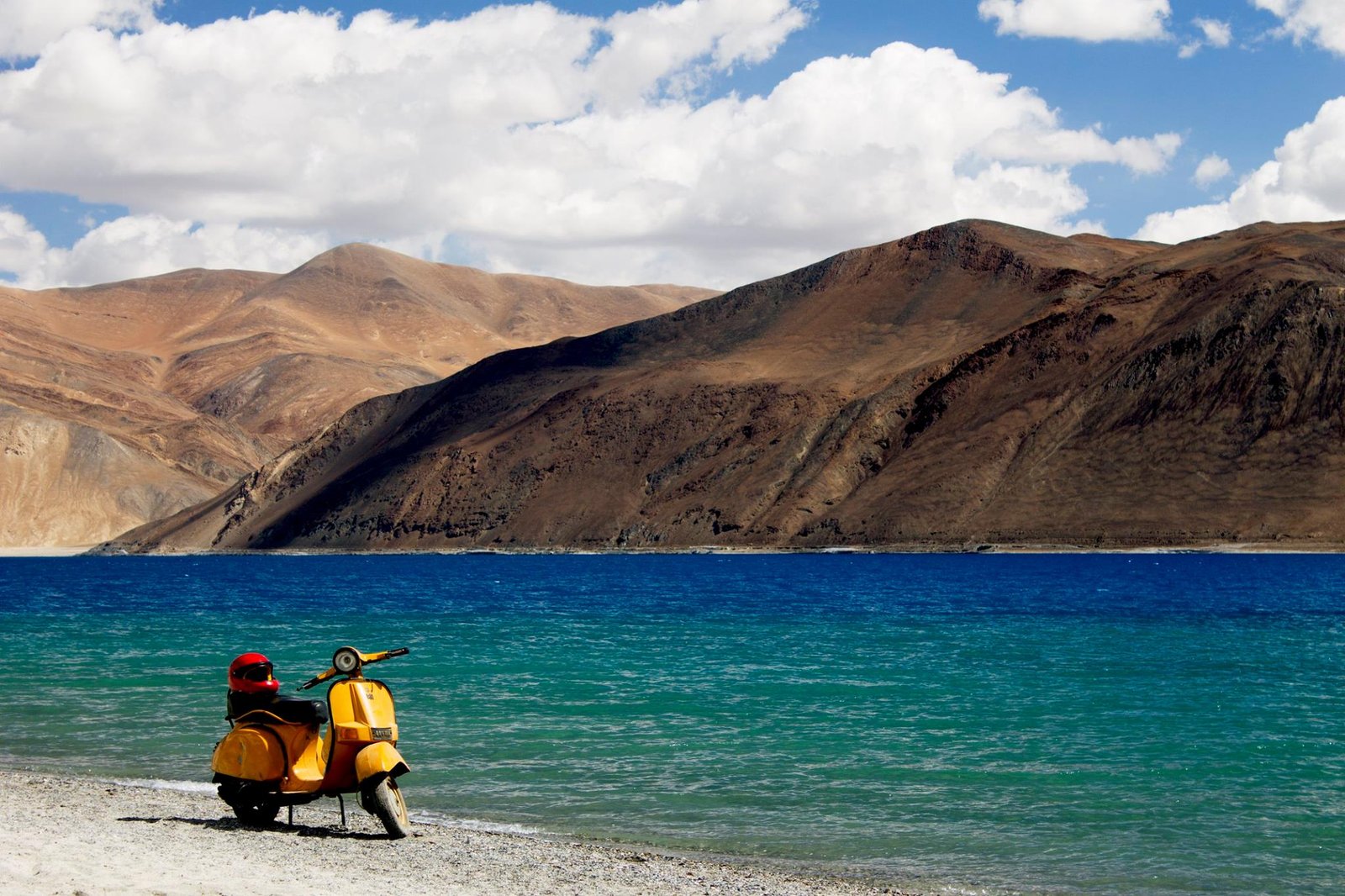
India’s Own Moonland
A land like no other with a superabundance of attractions to visit and fabulous landscapes, amazing people and culture, Ladakh is truly a heaven on Earth.
Bounded by two of the world’s mightiest mountain ranges, the Great Himalaya and the Karakoram, it lies athwart two other, the Ladakh range and the Zanskar range. Ladakh is mystical in all the spheres it covers, from nature, geography, sceneries to the modest cultures that it fosters. Right from gompas to the sensational momos, the superabundance of attractions to visit makes this city make it heaven on earth. It is said that only in Ladakh can a man sitting in the sun with his feet in the shade suffer from sunstroke and frostbite at the same time.
For those of us living in the constant confusion about the difference between these twin locations, Leh-Ladakh, here is something that might help you. The state of Jammu and Kashmir is divided into three parts: Jammu, Kashmir, and Ladakh. Ladakh, further is divided into two districts: district Leh, and district Kargil. The former district has a popular town “Leh” and is a great tourist attraction because of its beautiful monasteries, picturesque locations, and interesting markets defining the culture of the place.
Pangong Lake
The famous and sparkling blue Pangong lake is situated near Leh-Ladakh in the Himalayas, approximately at the height of 4350 meters. This endorheic lake is 12 kilometres long and extends from India to Tibet, with two-thirds of it lying in the latter. Owing to its altitude, the Pangong Lake temperature ranges from -5°C to 10°C as a result of which it freezes completely during winters in spite of its salinity. A unique feature of the lake is that it does not remain blue throughout the year or even the day, rather it changes colours from azure to light blue to green and grey too! Also known as Pangong Tso, it has been a tourist attraction for a very long time and has gained further popularity after being a ‘hot-spot’ for many film shoots, apart from being essential for anyone travelling to Leh – Ladakh. The sublime beauty, crystal waters and gentle hills of Pangong Lake are an exceptional example of the beautiful landscape of the region. There are two streams from the Indian side that form the wetlands and marshes at the edges. It is the beauty of the impeccable blue waters that embezzle the tourist’s attention the most. The serenity and tranquility of Pangong Lake are the tourist’s paradise.
Magnetic Hill
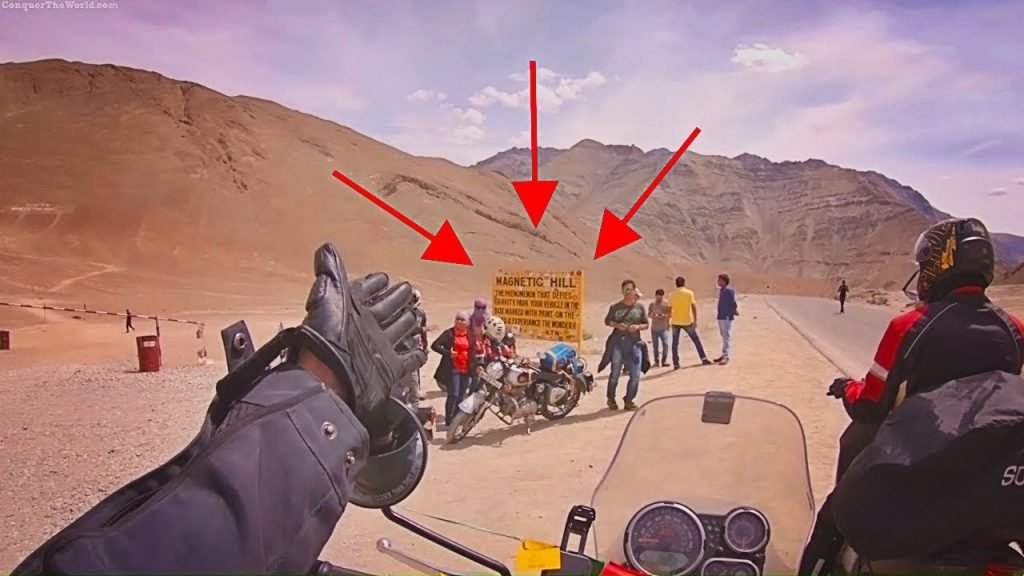
An optical illusion or actuality, the Magnetic Hill in Ladakh has mysterious magnetic properties that draw tourists from across the globe. Imagine a car moving uphill with its ignition off! Well, this so-called gravity-defying hill operates on a magnetic phenomenon that leaves you spellbound. Sounds surreal? Well, you can experience it too while travelling to Ladakh. A secret you will never truly know if you don’t experience it firsthand. Nesting pretty at an altitude of 14000 feet above sea level, you have to take the Leh-Kargil-Baltic National Highway to reach the destination. Found at a distance of 30 km from the scenic town of Leh the magnetic hill is girdled by the Sindhu River on its eastern side and cradled in a picturesque backdrop of the Himalayan Range. Just park your vehicle inside the marked box and experience the geological wonder nature has to offer. We live in a strange world where sometimes there is no logical explanation to beliefs and superstitions. People say the hill has superpowers that transport the worthy to heaven. However, there is not one but two plausible scientific explanations behind this majestic magnetic hill. The first theory states that this Magnetic hill is an optical illusion caused by the descending and rising terrain. The alignment of the road and the absence of a visible horizon create a downward slope to appear like an upslope. The second theory states that the hill exudes a strong magnetic force that pulls vehicles parked within its range. Many tourists and Indian Air Force officials have collaborated with this theory.
Hamis National Park
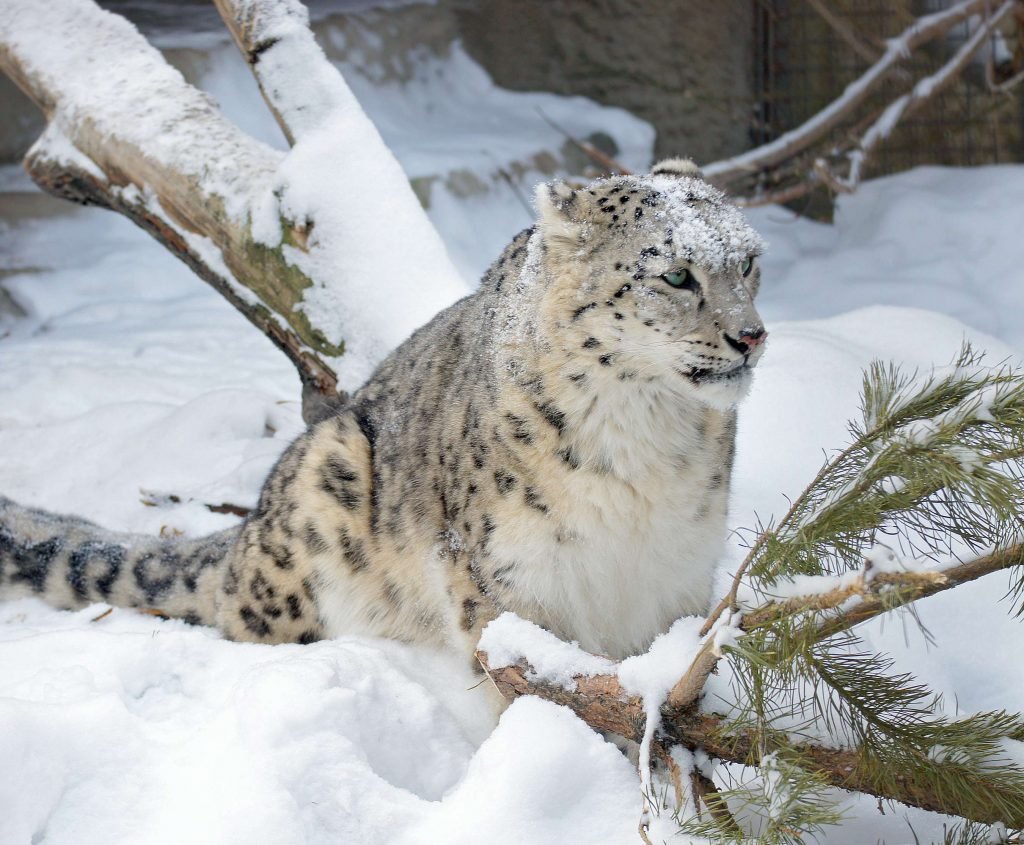
Established in 1981, the park is named after the famous monastery of Ladakh, Hemis Gompa. The park, apart from showcasing the varied landscape of Ladakh, is home to almost 11 species of fauna and 30 species of avifauna. The main attraction of the park is the snow leopard, especially in the Rumbak catchment area. Another reason to visit is to explore the vegetation of Ladakh, which is as interesting as it is varied. There are several things to explore and discover in Hemis National Park, one of them being its varied vegetation, and of course, it’s wildlife. The foliage of the park mostly consists of Himalayan subtropical pine forests, Western Himalayan alpine shrubs and meadows and Himalayan alpine tundra. In the lower reaches of the park, there are several kinds of plant species including dry birch, juniper and fir. If you head to the upper mountain slopes of the park where there is greater precipitation in the air. You come across a wide kind of alpine vegetation. Another things to see in Hemis National Park is the different kinds of animal species. However, the prime attractions are the Shapu sheep and the Snow Leopard, two animal species not to be found anywhere else in the country. While exploring the park, you will spot various kinds of animals like Bharal (Blue Sheep), Shapu (Ladakhi Urial) and Great Tibetan Sheep. Several endangered species including the Eurasian brown bear, Tibetan wolf and red fox, among others, can also be found in the park. Don’t miss to spot Himalayan Snowcock, Himalayan Griffon vulture, Leaf Warbler, Gold Eagle etc.
Shanti Stupa
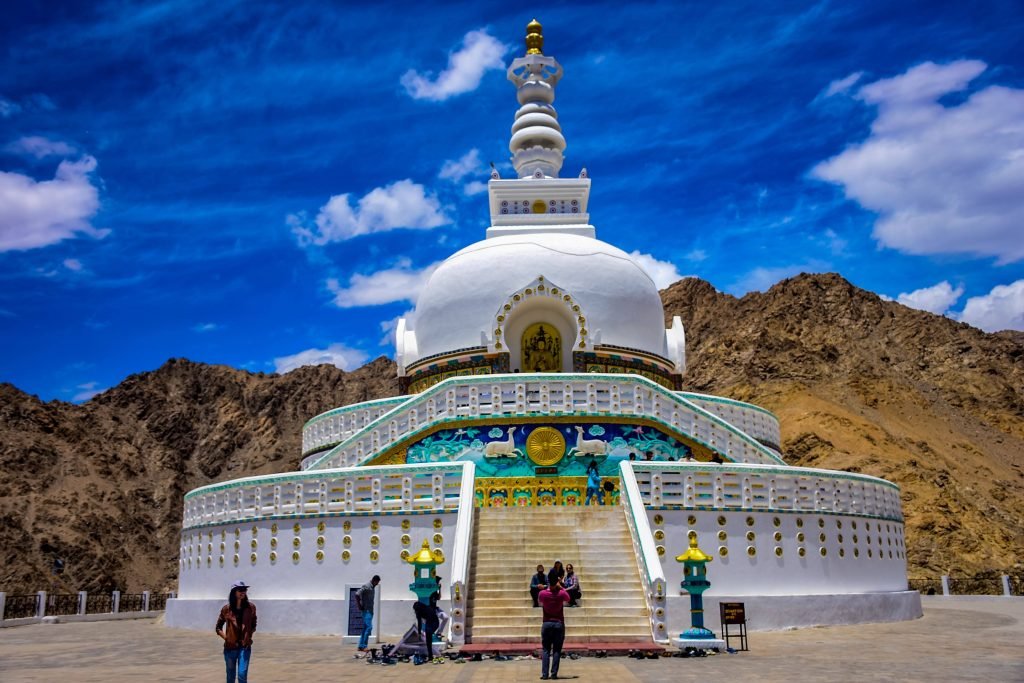
Around 5 km from Leh, Shanti Stupa is a white-domed Chorten, located on a hilltop in Chanspa, which was built between 1983 and 1991. Overlooking the Leh town, it is one of the best attractions in Leh. For celebrating the completion of 2500 years of Buddhism and to promote world peace, this stupa was commissioned by Japanese monks. The walls have gilt panels that depict the life of Lord Buddha. Sunrise and sunset are wonderful from here. On the first of this two-storied structure has Buddha statue in a sitting position on a pedestal, turning the Dharmachakra. Mighty ranges of snow-capped mountains provide a stunning backdrop to Shanti Stupa. The view of the milk-white snow carpeting the magnanimous Himalayas and sparkling under the soft shine of the shying sun is sure to enthral you like never before. Shanti Stupa is a perfect getaway for both- those looking to obtain peace from offering prayers to God and those waiting to be mesmerised by nature’s wondrous beauty.
Leh Palace

The Leh Palace, also known as ‘Lhachen Palkhar’ is one of the most historically rich edifices that can be found in the country and is located in the breathtakingly beautiful Kashmir, in the town of Leh in India. This grand structure was built in the 17th century by King Sengge Namgyal as a royal palace, and the King and his family were the former residents of the majestic mansion. The Leh Palace is also one of the tallest buildings of its time with nine stories in all, and offers marvellous panoramic views of the entire town of Leh, as well as of the Stok Kangri and Zanskar mountains of the mighty Himalayan ranges, thereby giving the palace a strategic position. Sunrises and sunsets are extraordinarily beautiful and captivating scenes when viewed from the top of the Leh Palace. The palace looks even more stunning when it is lighted upon certain special occasions, such as Galdam Namchot festival when locals gather around the palace to celebrate the local festival. Even though a considerable part of the Leh Palace is now in ruins due to the Kashmiri invasion that took place in the 19th century, the stately palace continues to remain a stunning place to explore. The beauty of the Leh Palace still stands in pride with a lot of ancient Buddha relics, paintings, old utensils, cutlery used by the royal family and artefacts adorning the walls of the palace. The majestic palace is presently under the Archaeological Survey of India, which is working on renovating the ancient structures of that era and striving to keep intact the history of the Namgyal dynasty in Leh.
Tso Moriri Lake
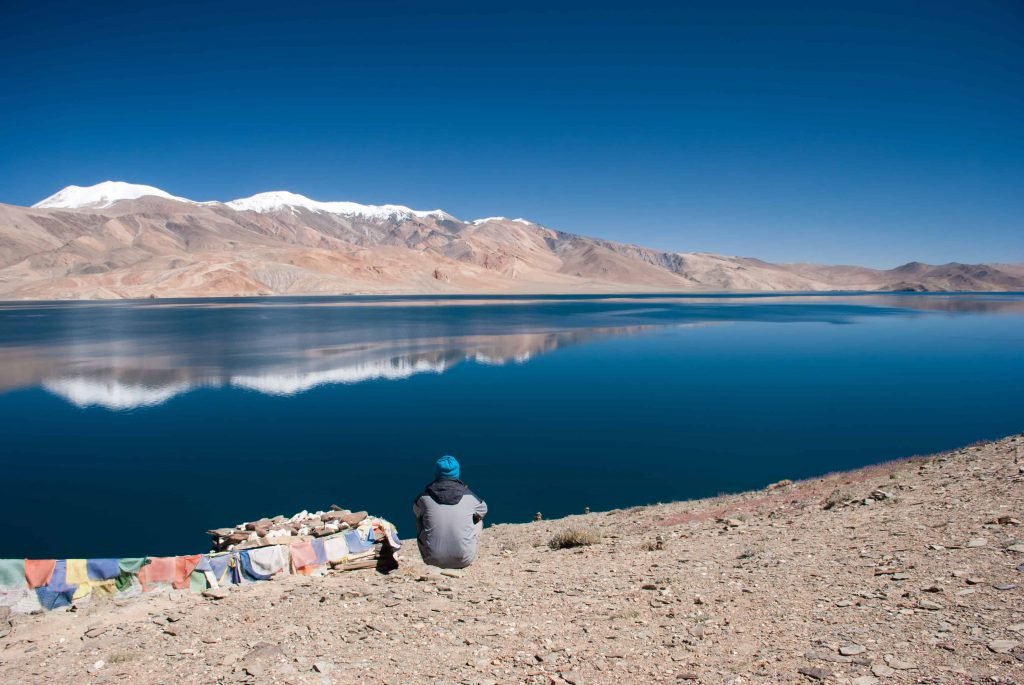
The lesser known of the many lakes within the Changtang Wildlife sanctuary, Tso Moriri Lake is a twin to the Pangong Lake. This lake offers a scenic place of peace and tranquillity, measuring about 28 km in length from north to south, and about 100 feet average in depth. The enchanting Tso Moriri Lake is surrounded by barren hills, with the backdrop of beautiful snow-covered mountains. Since this is the lesser known of the two lakes, the crowd is less too. Tucked away in the remotest parts of the country makes Tsi Moriri a perfect star gazing sight rendering a complete mind-stirring site. Tso Moriri has been declared as a wetland reserve. A number of species of birds included bare-headed goose, the great-crested grebe, the Brahmin duck and the brown-headed gull. Himalayan hares are abundantly found here. Moriri Tso is also called the ‘mountain lake’, owing to the peaks that surround it, towering at a height of 2000 meters, shutting it off from the outside world.
Namgyal Tsemo Monastery
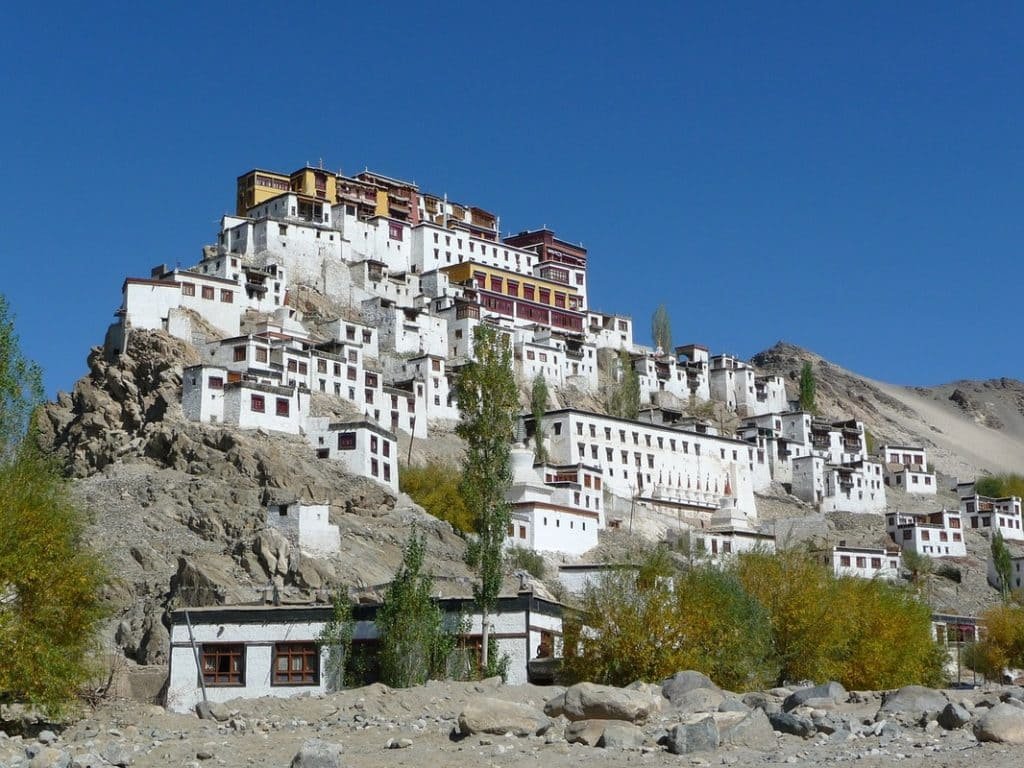
Founded way back in 1430, Namgyal Tsemo Monastery is located in the background of the Leh Palace. The monastery enjoys a wonderful setting and thus is one of the most popular places to visit in Leh Ladakh. The views of the plains, surrounding snow-covered peaks of the Zanskar mountain range, and the River Indus are stunning. The star highlight is the 3-storied high solid gold statue of Maitreya Buddha. Other attractions are statues of Avalokitesvara and Manjushri. It also has a vast collection of wonderful frescoes. The walls of the assembly hall are adorned with brilliant paintings. Travelling to the Namgyal Tsemo Monastery makes you encounter the steep mountains and submerges you in its serene and spiritual folds. Renamed as the Namgyal Tsemo Gompa, the striking monastery has long lured travellers seeking Buddhist experience but surprises them with something unexpected- the moon-like, quiet and mystic expanse of Ladakh’s landscape.
Khardung La Pass

Khardung La, also known as Khardzong La, is a high mountain pass in Ladakh region of Jammu and Kashmir, near Leh. It has been wrongly claimed as the highest motorable road in the world in Guinness World Record at an elevation of 5602 metres. However, according to various researches, the actual elevation is 5359 metres. Also referred to as the ‘Pass of Lower Castle’, Khardung La pass is a perfect getaway for adventure enthusiasts, peace seekers and mountain biking aficionados. An entrance to the Shyok and Nubra Valley, Khardung La was built in 1976 and was opened for public in 1988. The pass is very important for India as it is used to carry supplies to Siachen glacier. As you make your way to the top, you are rewarded with stunning views of mountain valleys and tortuous roads. The pristine air with the surrounding snow-clad mountains is the cherry on the cake. From the top, you can get picturesque views of the Karakoram range and the Himalayas. However, due to heavy rains and snowfall, the Khardung La pass remains closed from July to August and November to February.
Nubra Valley

Nubra Valley lies in the union territory of Jammu & Kashmir, at a distance of around 140 Km from Leh. Located on the ancient Silk Route, the valley has Shyok and Nubra River snaking through it and some beautiful monasteries. The region is currently under military supervision because the road further leads to the Siachen base camp, which happens to be the highest battlefield in the world. All foreign nationals need to get protected area permit, and Indian travellers need to obtain an Inner Line Permit to enter the Nubra valley. You need to hand over the photocopies of your travel permits to the soldiers in the Khardung La pass. With arid mountains in the backdrop, Nubra Volley is famous for the Bactrian camel rides. Bactrian camels are of the rarest sort, having two humps and were the primary source of transportation in the silk route. In Diksit, you can buy some lovely Kashmiri or Tibetan artefacts, Pashmina shawls, woollen socks, almonds, apricots, apples and other things that define Kashmir.
Lamayuru Monastery
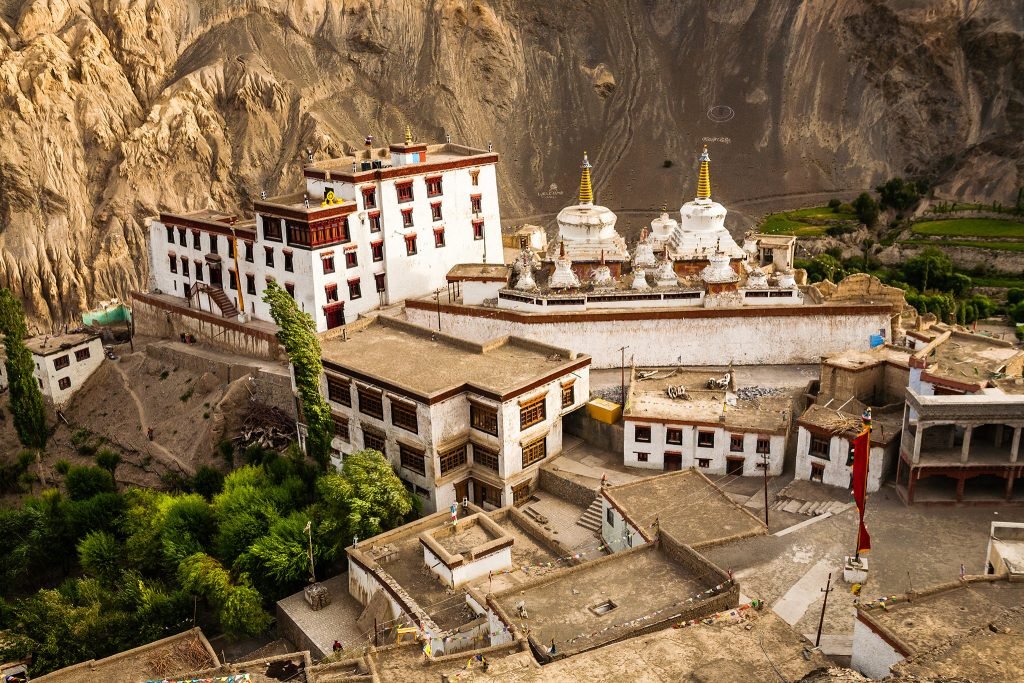
With a dreamy moon-like landscape, the quaint Lamayuru town lies sandwiched between Leh and Kargil. A sight to behold, it has crater type yellowish-orange formation in the brown colored soil. The beauty of this town cannot be described in words. Visit the beautiful Lamayuru Monastery here, which is not only a place of worship but also has thangkas, Buddhist guardian deities, and frescoes on display. This monastery dates back to the 11th century. The peace of the town is broken by the gushing sounds of River Sind. It is 127 km away from Leh.
Alchi
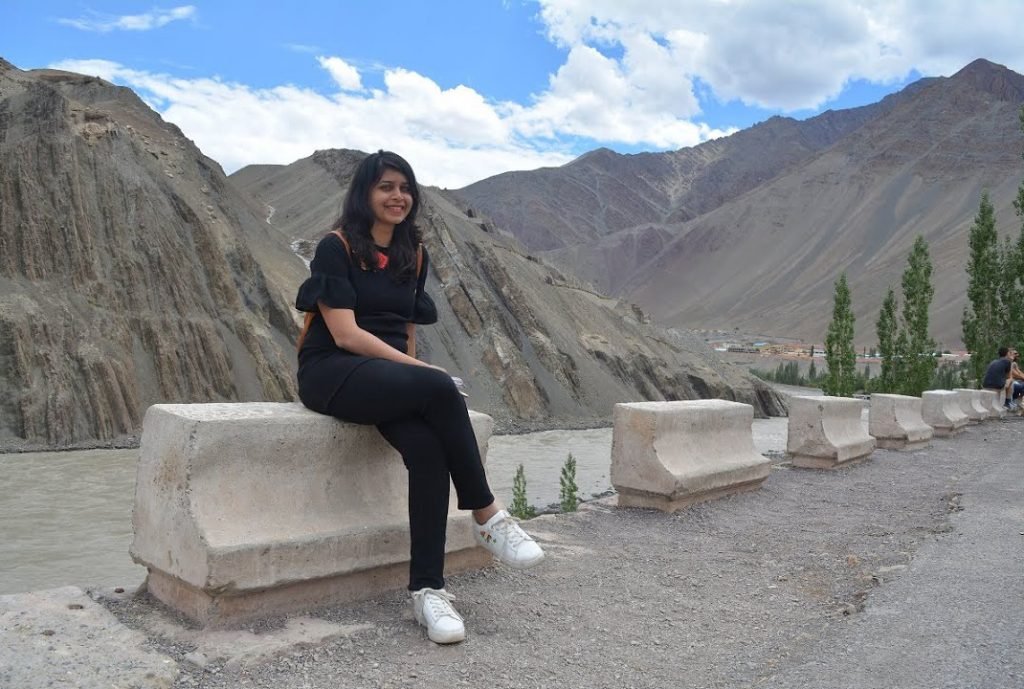
Alchi is a beautiful tiny hamlet, placed on low land. It lies on the banks of Indus River, at a distance of around 70 km westwards of Leh. The village is known to have fertile land. Notice the apricot trees on both the sides of the road as you explore the place. The influence of Hinduism, Buddhism as well as Islam can be seen here. Explore this wonderful place and visit its various attractions like Sumtsek Temple, Manjushree Temple, Monk Cells and so on. Do not miss a visit to the very popular Alchi Monastery, one of the most popular monasteries in Ladakh.
Zanskar Valley
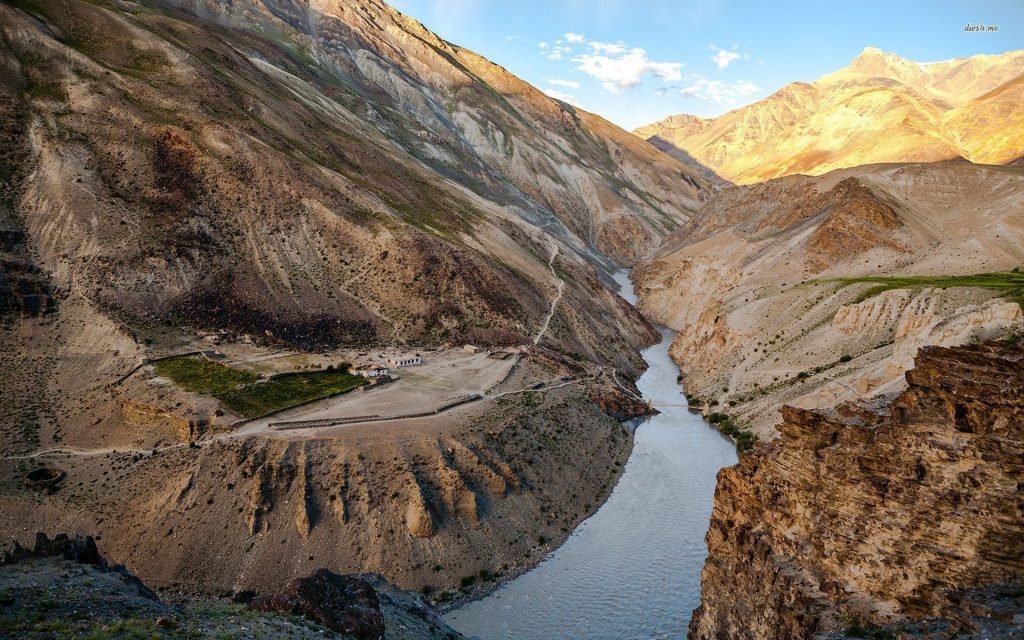
Nestled in a remote corner of Ladakh, the Zanskar Valley is one of the most enchanting places to visit. It is located in the eastern corner of Jammu and Kashmir and is separated from Ladakh by the Zanskar Mountain Range. It is a part of The Tethys Himalayas which is formed with weekly transformed sedimentary series. Zanskar Valley is known for its wide views and sceneries, cave monasteries and mostly travelled to for its trekking trails and river rafting experiences and the Suru Valley, the two valleys almost always visited together. Nestled between two tiny alpine lakes, most isolated of all Himalayan valleys, Zanskar Valley has an area of about 5,000 sq kms and is situated at an elevation of 13,154 above sea level. This valley is cut off from the rest of the world for over 9 months of the year because of heavy snowfall in the region. Due to the distinct flora and fauna and the extremely variant climate, Zanskar Valley has become one of the most sought after places to visit. With a backdrop of the beautiful snow-capped glacier mountain peaks and the crystal clear water gushing down the valley, it has gained even more popularity.
Markha Trek
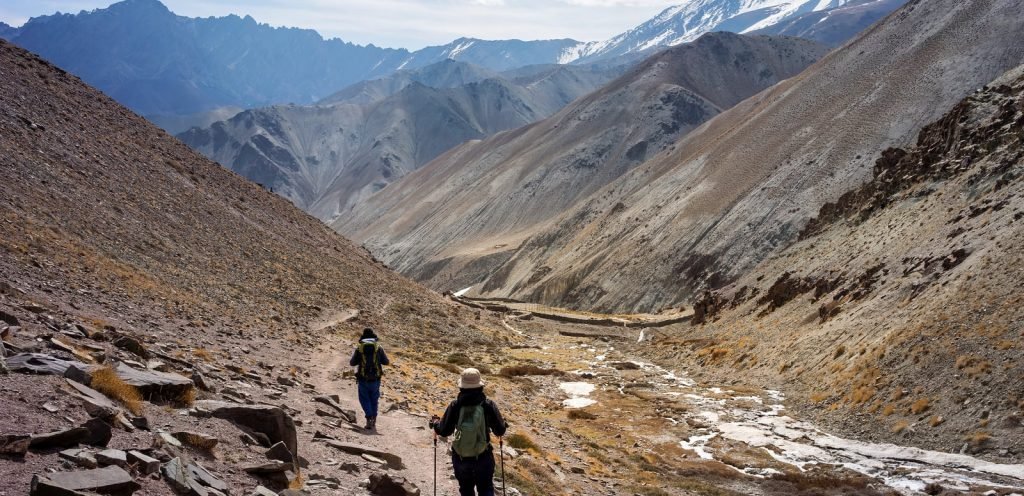
One of the popular trails for trekking in Leh, Markha Valley trek, takes about 8 days and will take you through varying landscapes. The scenic landscapes and the Kongmaru La pass at 5000 m above sea level and the sight of Hemis National Park make this trek are stunning. This trek also begins from Spituk to Zinchen and then onwards to Yurutse. The trail moves up to the Ganda La pass and then descends down to Skyu. Proceeding further to Markha Valley along the course of Markha River, you’ll cross the river several times before reaching Thachungtse.
Next, comes the highest camp on this trek – Niamling with a spectacular view of the Zanskar range. Kongmaru La pass comes next, which is the highest pass on the Markha Valley trek. You may be tempted to spend a night at the village of Shang Sumdo from where an easy descent stream will bring one to the famed Hemis and Thiksay monastery, before a drive back to Leh. This trek is one of the most thrilling experiences in your life in which you would be camping at various sites like Markha, Hankar, and Skiu and seeing the starry skies in the mountains. You can get an opportunity to glare at the enchanting views of the Stok Kangri.
Markha Valley Trek with Stok Kangri Climb, This trek could be a more thrilling and adrenaline-filled experience through the Stok Kangri. The ten-day trek route via the Stok Summit at 4900 meters makes this Leh trekking experience arguably one of the best but definitely not for the faint-hearted.
Chadar Trek

This is one of the most famous tourist attractions in the Ladakh region. The Zanskar River freezes in the winters and people have to walk on the frozen river to reach the Nerak. This trek is a famous winter trek that starts from Chilling, from where the river starts freezing.
Most fascinating of all treks, the Chadar trek on the frozen Zanskar River is the most fascinating of all the treks in Leh. Every year when the river freezes, the route is open to adventurous trekkers for a couple of months. It is a challenging trek demanding physical and mental fitness. The name ‘chadar’ trek is given since the river resembles a blanket of snow. The starting point of the trek is Chilling, 64 kilometres away from Leh. There’s everything on the route from frozen waterfalls, monasteries such as Lingshed Gompa and Karsha Gompa (the largest in Zanskar), and even a fort at Zangla village. The daytime temperature usually ranges between -5 and -10 C and at nights it can plunge down to -25 C. Hence it’s necessary to carry enough warm jackets (wind and rainproof) and clothes.

